Performance Studies of High-Power Optical Parametric Oscillators Pumped by a Pulsed Fiber Laser
Abstract
:1. Introduction
2. Experimental Setup
3. Experimental Results and Discussion
3.1. Characteristics of Pump Beam
3.2. Parameters Affecting Idler Power
3.3. Characteristics of Idler Beam
4. Conclusions
Author Contributions
Funding
Institutional Review Board Statement
Informed Consent Statement
Data Availability Statement
Conflicts of Interest
References
- Walsh, B.M.; Lee, H.R.; Barnes, N.P. Mid infrared lasers for remote sensing applications. J. Lumin. 2016, 169, 400–405. [Google Scholar] [CrossRef]
- Bagley, M.C.; Pace, C.L.; Ekelof, M.; Muddiman, D.C. Infrared matrix-assisted laser desorption electrospray ionization (IR-MALDESI) mass spectrometry imaging analysis of endogenous metabolites in cherry tomatoes. Analyst 2020, 145, 5516–5523. [Google Scholar] [CrossRef]
- Weibring, P.; Edner, H.; Svanberg, S. Versatile mobile lidar system for environmental monitoring. Appl. Opt. 2003, 42, 3583–3594. [Google Scholar] [CrossRef] [PubMed] [Green Version]
- Waynant, R.W.; Ilev, I.K.; Gannot, I. Mid-infrared laser applications in medicine and biology. Philos. Trans. R. Soc. Lond. Ser. A Math. Phys. Eng. Sci. 2001, 359, 635–644. [Google Scholar] [CrossRef]
- Willer, U.; Saraji, M.; Khorsandi, A.; Geiser, P.; Schade, W. Near- and mid-infrared laser monitoring of industrial processes, environment and security applications. Opt. Lasers Eng. 2006, 44, 699–710. [Google Scholar] [CrossRef]
- Troccoli, M.; Diehl, L.; Bour, D.P.; Corzine, S.W.; Yu, N.F.; Wang, C.Y.; Belkin, M.A.; Hofler, G.; Lewicki, R.; Wysocki, G.; et al. High-Performance Quantum Cascade Lasers Grown by Metal-Organic Vapor Phase Epitaxy and Their Applications to Trace Gas Sensing. J. Light. Technol. 2008, 26, 3534–3555. [Google Scholar] [CrossRef]
- Doroshenko, M.E.; Jelinkova, H.; Koranda, P.; Sulc, J.; Basiev, T.T.; Osiko, V.V.; Komar, V.K.; Gerasimenko, A.S.; Puzikov, V.M.; Badikov, V.V.; et al. Tunable mid-infrared laser properties of Cr2+:ZnMgSe and Fe2+:ZnSe crystals. Laser Phys. Lett. 2010, 7, 38–45. [Google Scholar] [CrossRef]
- Boyd, R.W. Nonlinear Optics, 4th ed.; Academic Press: New York, NY, USA, 2020; p. 560. [Google Scholar]
- Dunn, M.H.; Ebrahimzadeh, M. Parametric generation of tunable light from continuous-wave to femtosecond pulses. Science 1999, 286, 1513–1517. [Google Scholar] [CrossRef] [PubMed]
- Furukawa, Y.; Kitamura, K.; Alexandrovski, A.; Route, R.K.; Fejer, M.M.; Foulon, G. Green-induced infrared absorption in MgO doped LiNbO3. Appl. Phys. Lett. 2001, 78, 1970–1972. [Google Scholar] [CrossRef] [Green Version]
- Peng, Y.; Wei, X.; Wang, W.; Li, D. High-Efficiency 2.7 μm Tunable Mid-Infrared Laser. Acta Opt. Sin. 2010, 30, 2624–2628. [Google Scholar] [CrossRef]
- Peng, Y.F.; Wei, X.B.; Luo, X.W.; Nie, Z.; Peng, J.; Wang, Y.; Shen, D.Y. High-power and widely tunable mid-infrared optical parametric amplification based on PPMgLN. Opt. Lett. 2016, 41, 49–51. [Google Scholar] [CrossRef] [PubMed]
- Ishizuki, H.; Taira, T. Half-joule output optical-parametric oscillation by using 10-mm-thick periodically poled Mg-doped congruent LiNbO3. Opt. Express 2012, 20, 20002–20010. [Google Scholar] [CrossRef]
- Chen, T.; Wu, B.; Jiang, P.P.; Yang, D.Z.; Shen, Y.H. High Power Efficient 3.81 μm Emission From a Fiber Laser Pumped Aperiodically Poled Cascaded Lithium Niobate. IEEE Photonics Technol. Lett. 2013, 25, 2000–2002. [Google Scholar] [CrossRef]
- Chen, T.; Jiang, P.P.; Wu, B.; Shu, R.; Hu, C.Z.; Shen, Y.H. Temperature insensitive, high-power cascaded optical parametric oscillator based on an aperiodically poled lithium niobate crystal. Opt. Express 2014, 22, 26900–26907. [Google Scholar] [CrossRef] [PubMed]
- Chen, B.-Y.; Wu, S.; Yu, Y.-J.; Wu, C.-T.; Wang, Y.-H.; Jin, G.-Y. 3.8 μm mid-infrared optical parametric amplifier based on MgO:PPLN crystal. Infrared Phys. Technol. 2020, 111, 103448. [Google Scholar] [CrossRef]
- Peng, Y.F.; Wang, W.M.; Wei, X.B.; Li, D.M. High-efficiency mid-infrared optical parametric oscillator based on PPMgO:CLN. Opt. Lett. 2009, 34, 2897–2899. [Google Scholar] [CrossRef]
- Peng, Y.F.; Wei, X.B.; Wang, W.M.; Li, D.M. High-power 3.8 μm tunable optical parametric oscillator based on PPMgO:CLN. Opt. Commun. 2010, 283, 4032–4035. [Google Scholar] [CrossRef]
- He, Y.; Chen, F.; Yu, D.Y.; Zhang, K.; Pan, Q.K.; Sun, J.J. Improved conversion efficiency and beam quality of miniaturized mid-infrared idler-resonant MgO:PPLN optical parametric oscillator pumped by all-fiber laser. Infrared Phys. Technol. 2018, 95, 12–18. [Google Scholar] [CrossRef]
- He, Y.; Ji, Y.H.; Wan, H.H.; Yu, D.Y.; Zhang, K.; Pan, Q.K.; Sun, J.J.; Chen, Y.; Chen, F. High-power mid-infrared pulse MgO:PPLN optical parametric oscillator pumped by linearly polarized Yb-doped all-fiber laser. Opt. Laser Technol. 2022, 146, 107545. [Google Scholar] [CrossRef]
- Wu, B.; Kong, J.; Shen, Y.H. High-efficiency semi-external-cavity-structured periodically poled MgLN-based optical parametric oscillator with output power exceeding 9.2 W at 3.82 μm. Opt. Lett. 2010, 35, 1118–1120. [Google Scholar] [CrossRef]
- Smith, A.V. SNLO Nonlinear Optics Code Available from AV Smith; AS-Photonics: Albuquerque, NM, USA, 2005. [Google Scholar]
- Vainio, M.; Peltola, J.; Persijn, S.; Harren, F.J.M.; Halonen, L. Thermal effects in singly resonant continuous-wave optical parametric oscillators. Appl. Phys. B-Lasers Opt. 2009, 94, 411–427. [Google Scholar] [CrossRef]
- Lin, S.T.; Lin, Y.Y.; Huang, Y.C.; Chiang, A.C.; Shy, J.T. Observation of thermal-induced optical guiding and bistability in a mid-IR continuous-wave, singly resonant optical parametric oscillator. Opt. Lett. 2008, 33, 2338–2340. [Google Scholar] [CrossRef] [PubMed] [Green Version]
- Parsa, S.; Kumar, S.C.; Nandy, B.; Ebrahim-Zadeh, M. Yb-fiber-pumped, high-beam-quality, idler-resonant mid-infrared picosecond optical parametric oscillator. Opt. Express 2019, 27, 25436–25444. [Google Scholar] [CrossRef] [PubMed]

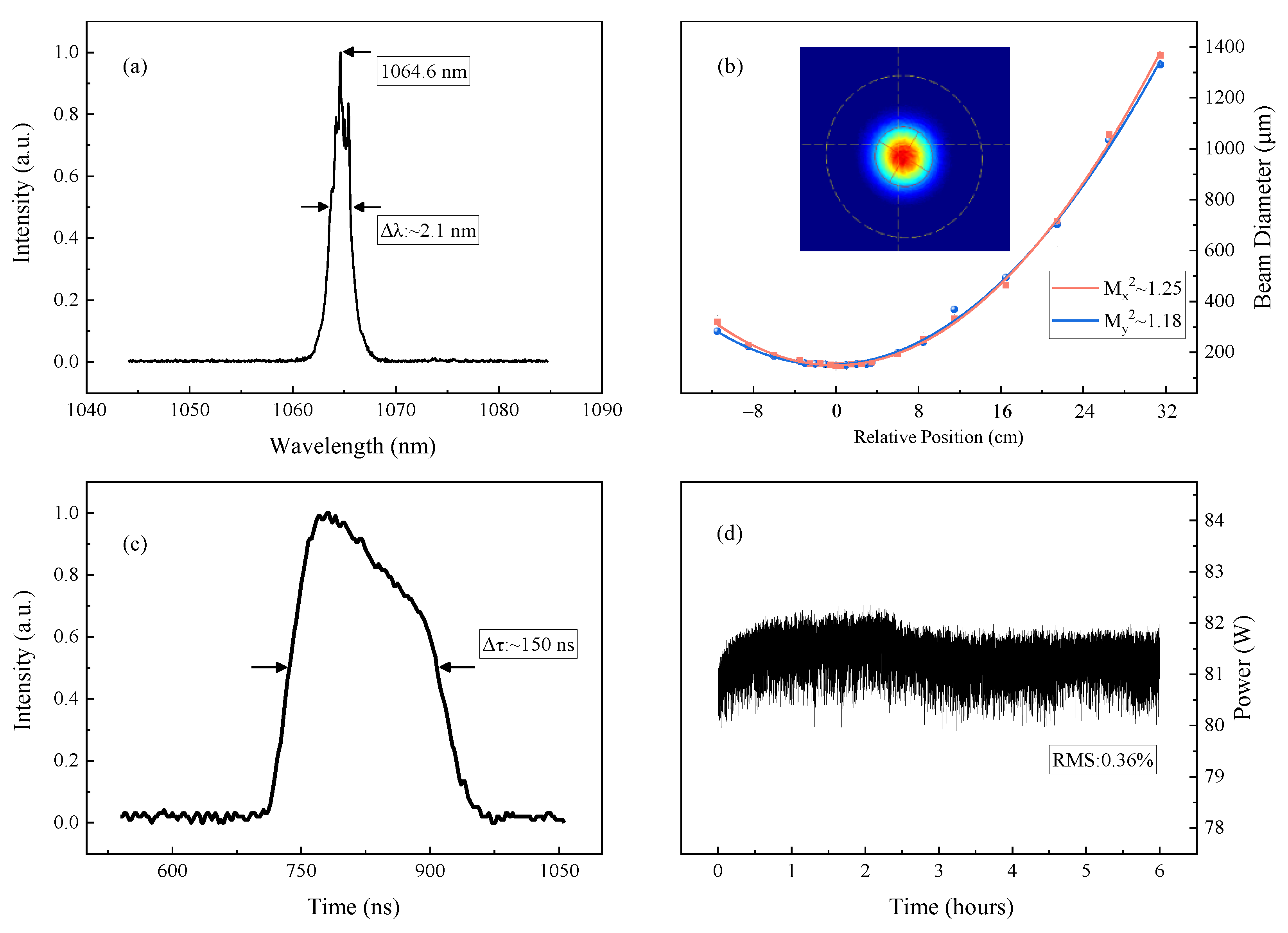
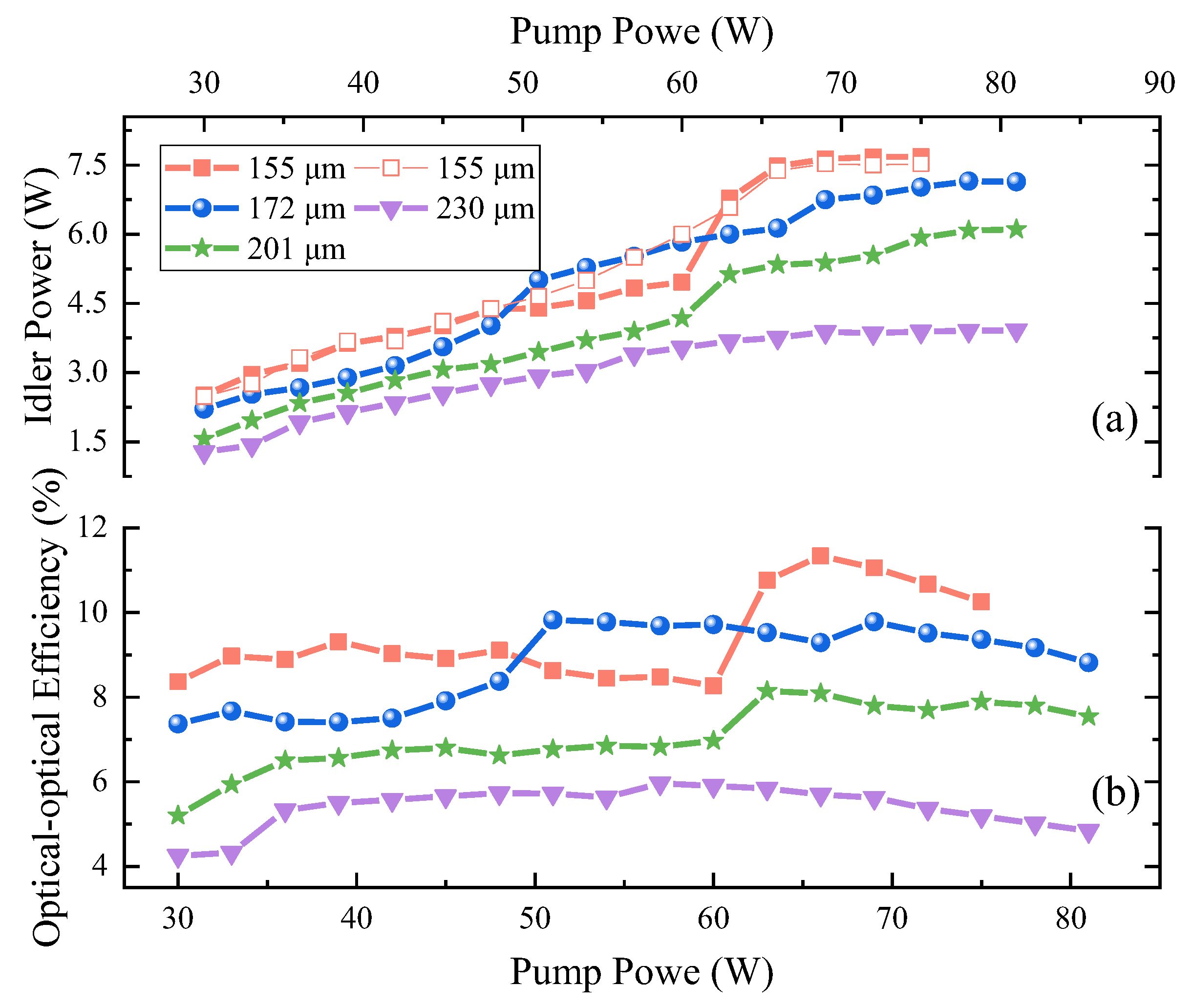
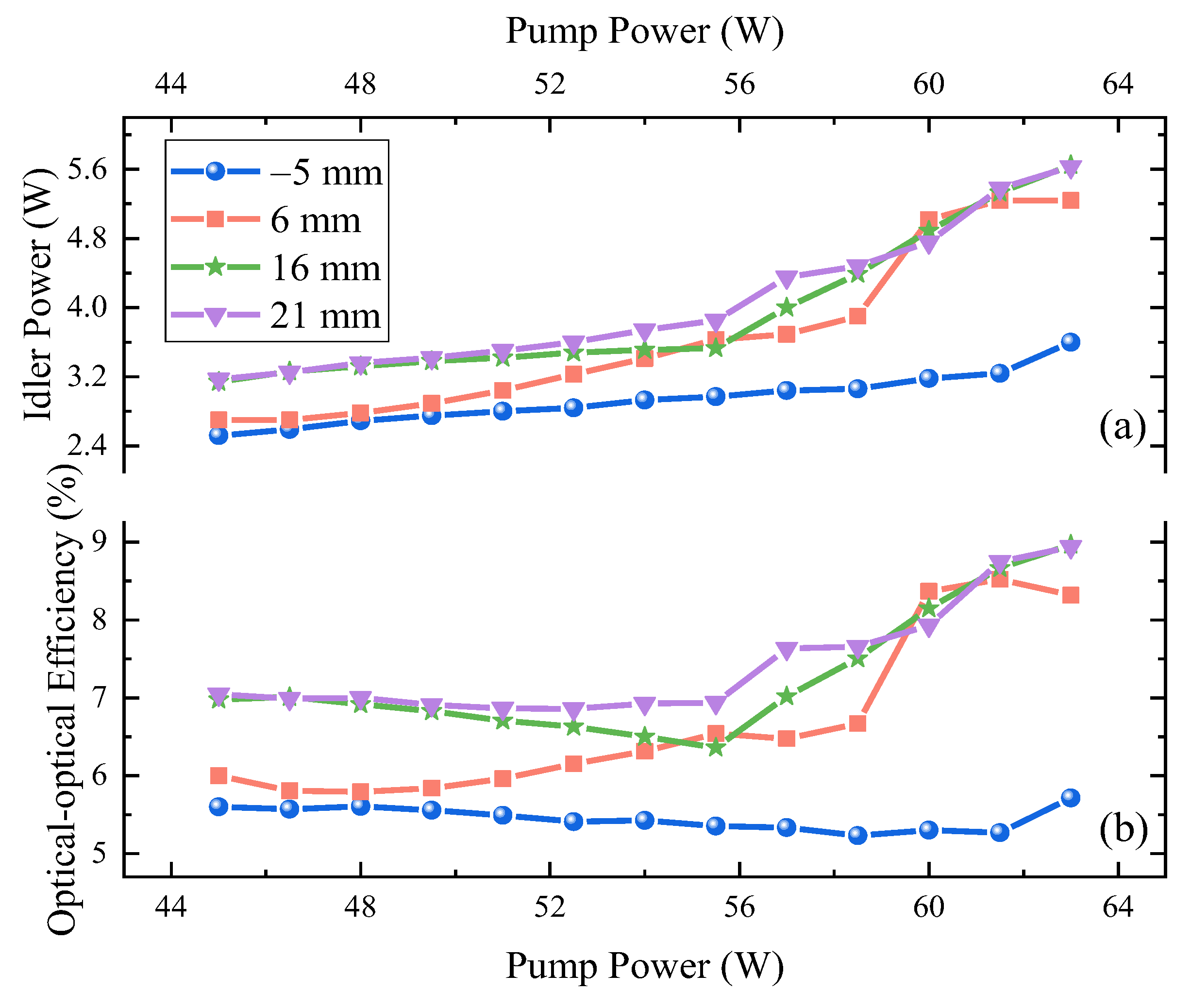
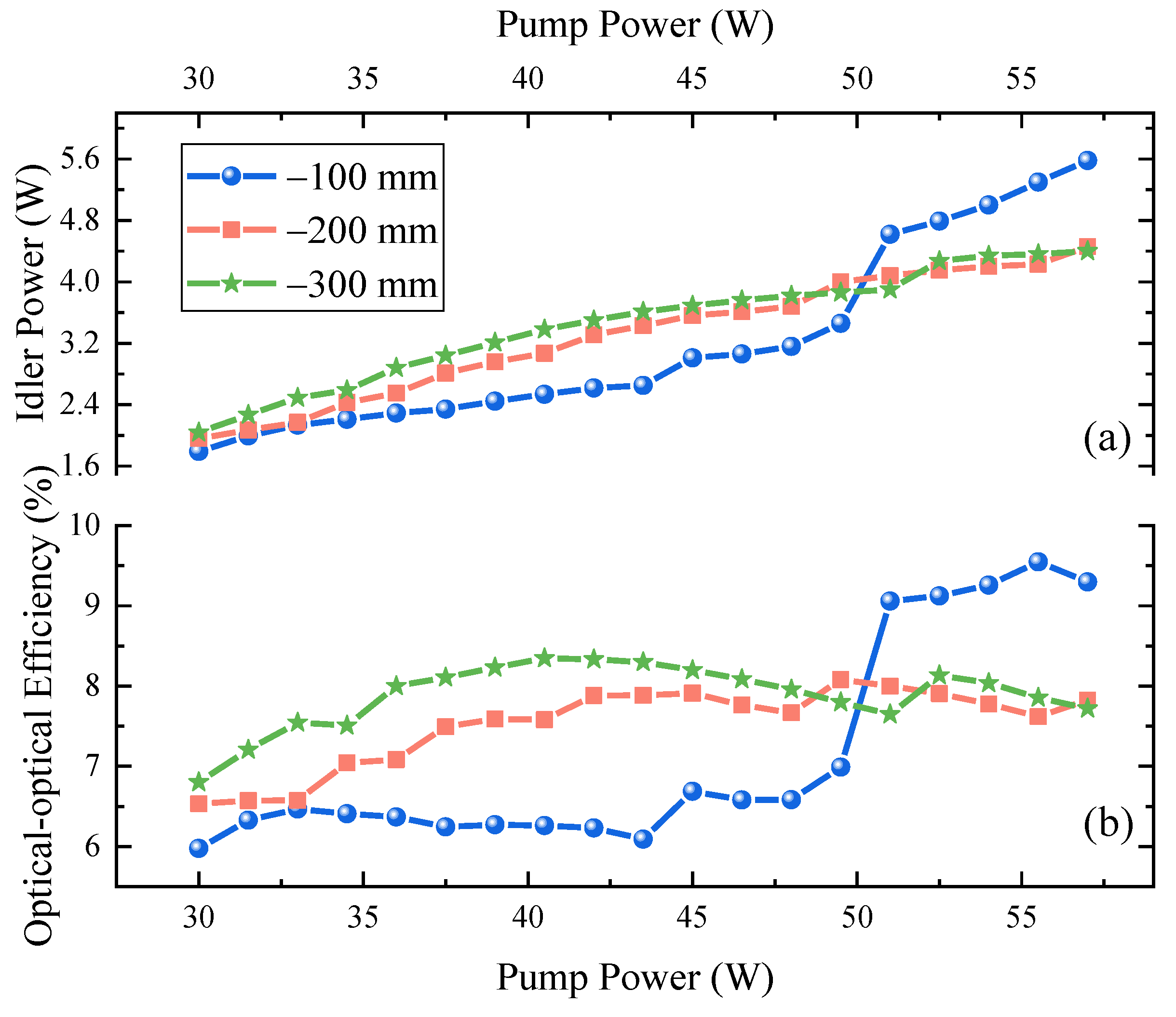

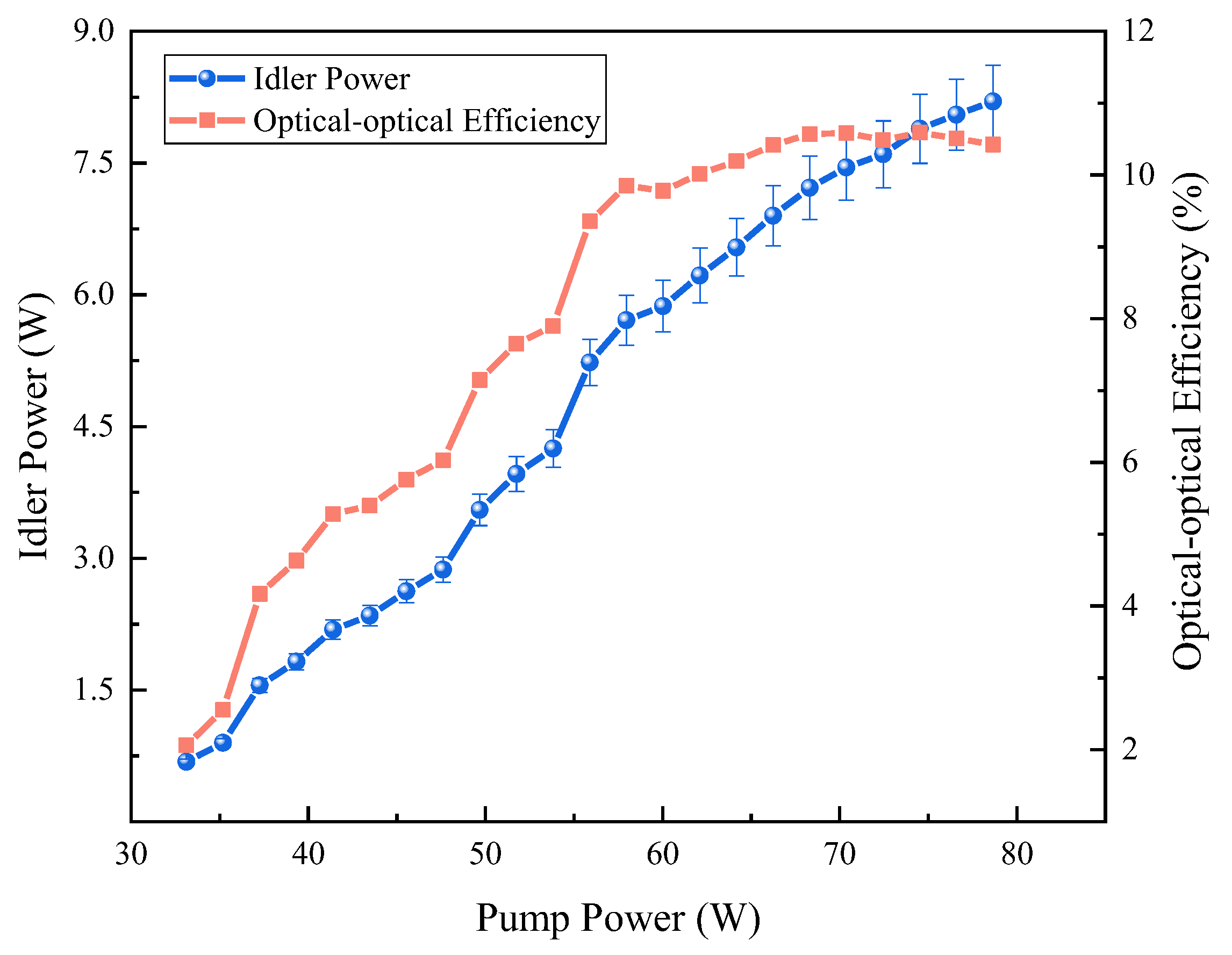
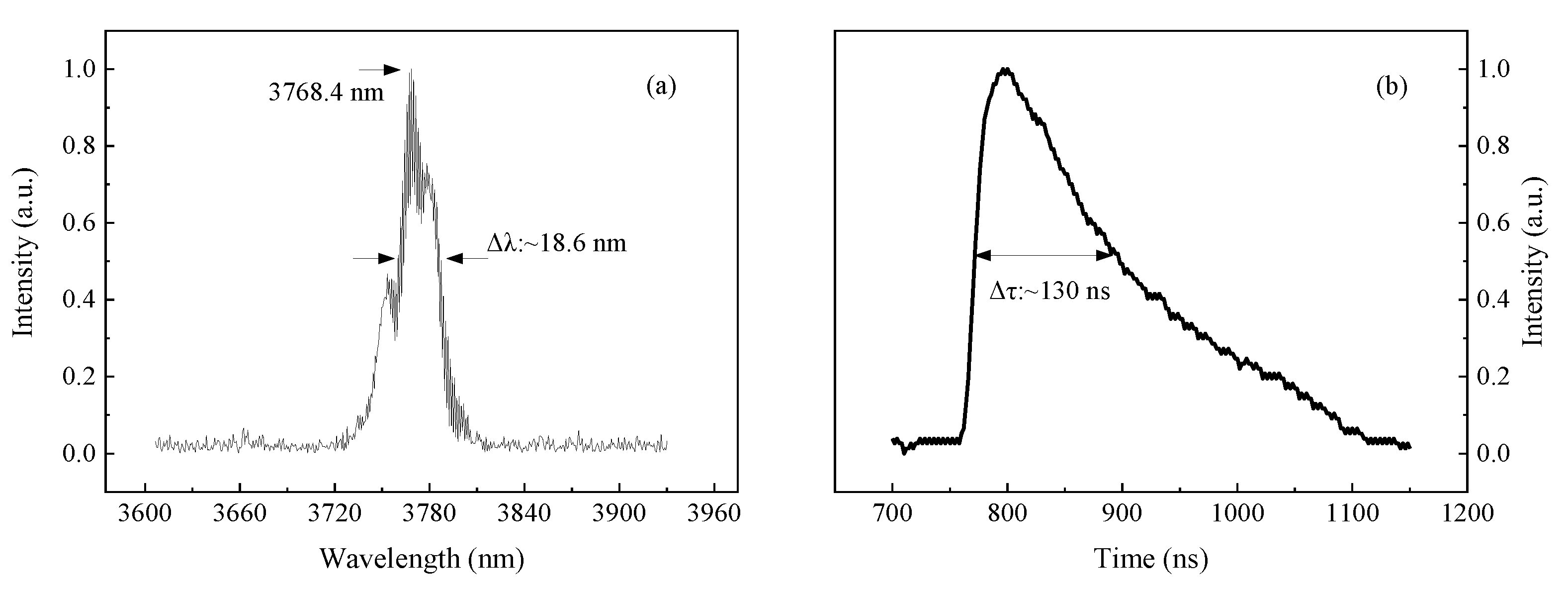
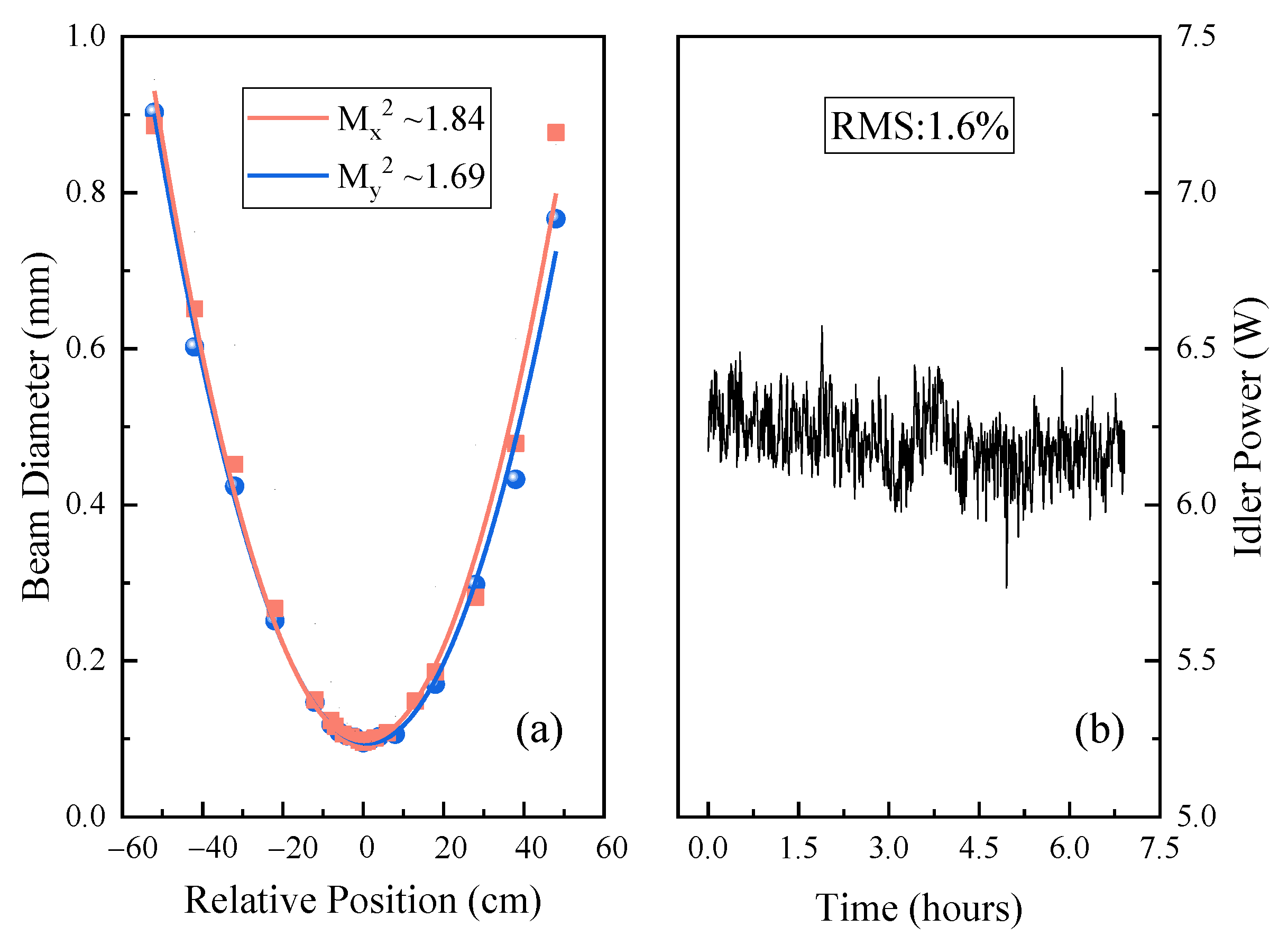
Disclaimer/Publisher’s Note: The statements, opinions and data contained in all publications are solely those of the individual author(s) and contributor(s) and not of MDPI and/or the editor(s). MDPI and/or the editor(s) disclaim responsibility for any injury to people or property resulting from any ideas, methods, instructions or products referred to in the content. |
© 2023 by the authors. Licensee MDPI, Basel, Switzerland. This article is an open access article distributed under the terms and conditions of the Creative Commons Attribution (CC BY) license (https://creativecommons.org/licenses/by/4.0/).
Share and Cite
Hu, L.; Shao, Y.; Lv, X.; Ning, J.; Zhao, G.; Zhu, S. Performance Studies of High-Power Optical Parametric Oscillators Pumped by a Pulsed Fiber Laser. Appl. Sci. 2023, 13, 7356. https://doi.org/10.3390/app13137356
Hu L, Shao Y, Lv X, Ning J, Zhao G, Zhu S. Performance Studies of High-Power Optical Parametric Oscillators Pumped by a Pulsed Fiber Laser. Applied Sciences. 2023; 13(13):7356. https://doi.org/10.3390/app13137356
Chicago/Turabian StyleHu, Liemao, Yuning Shao, Xinjie Lv, Jian Ning, Gang Zhao, and Shining Zhu. 2023. "Performance Studies of High-Power Optical Parametric Oscillators Pumped by a Pulsed Fiber Laser" Applied Sciences 13, no. 13: 7356. https://doi.org/10.3390/app13137356



